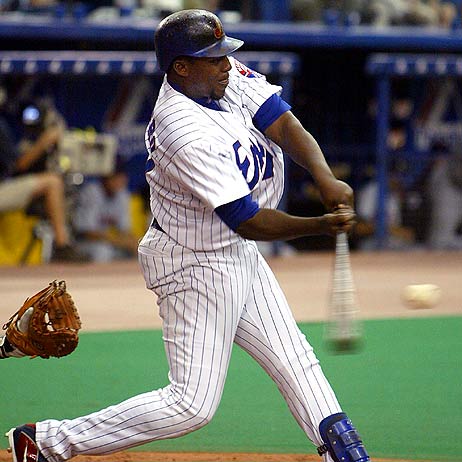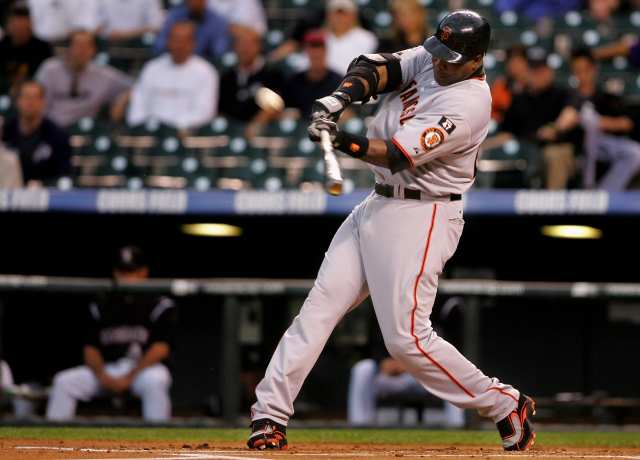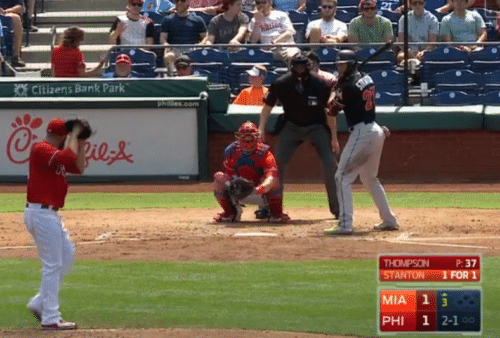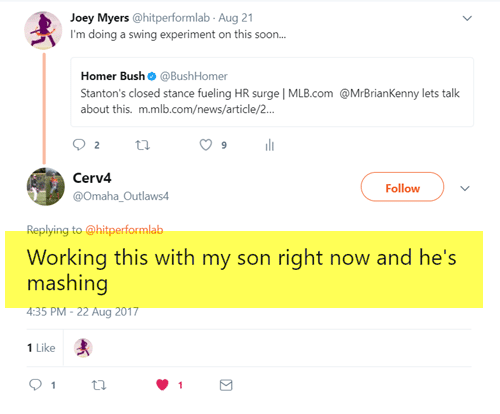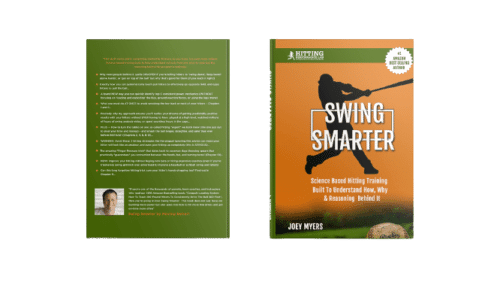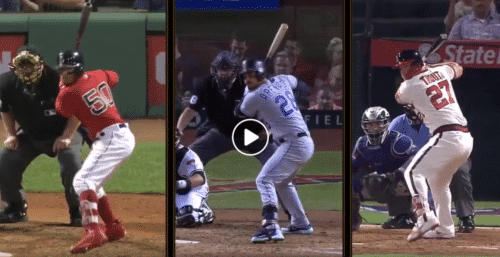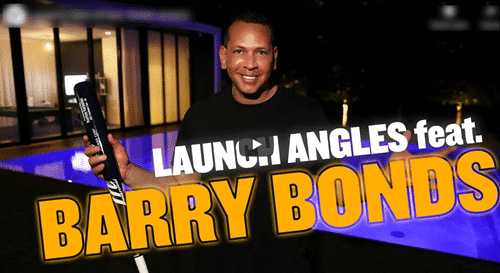Are you looking for 1 on 1 or small private group hitting lessons for baseball and softball players in the Fresno and Clovis, CA areas? Or are you looking for the best private online batting instruction and swing analysis in 2022? We do training for both adults and youth. This 20-min part-1 video webinar will give you a little taste of what we’re about…
Increase Consistent Power In 2-Weeks: Baseball Trainers Webinar Part-1…
For those interested:
- Here’s a link to sign up for our online hitting lesson program called The Feedback Lab,
- Please text me at: 559-709-5808 (Joey) if you’re in Fresno, Clovis, or general California area to setup private 1 on 1 instruction or small private group lessons.
- CLICK HERE for a link to Our Story and testimonials.
SCIENCE-BASED TRAINING:
Improve your hitting strategy dramatically by applying human movement principles.
Learn not only how and what to train but also the science behind the methods.
Here’s are the three parts:
- [YOU ARE HERE] Baseball Trainers Near Me? Part-1,
- Perfect Baseball Swing Webinar? Part-2, and
- Part-3 COMING SOON!!
The following is the transcript to the baseball trainers near me webinar… (about 18-minutes reading time)
Joey Myers 00:06
Get cozied up to technology over the years, because of the online thing, it is what it is.
Joey Myers 00:14
Let me let these people in. Welcome everybody that are coming in here. Some are coming in by phone.
Joey Myers 00:25
We have a lot of information today, I’m going to try and get through it really quickly, within 30 minutes. It will be good information.
Joey Myers 00:32
If you have any questions, I know, I have a lot of questions, a lot of great questions that Neil relayed over to me, from many of you. There’s a lot of them, like I said, 40-50, something like that.
Joey Myers 00:42
I’m going to do my best to really get through those quickly. Obviously, I’m not going to be able to go through them in depth, but if you have any questions after this, feel free to reach out and email me at Joey, J-O-E-Y, like Joey from friends, at hitting performance lab dot com, and I’ll have that at the end of this too. You don’t have to worry about downloading it into your brain. If you have any baseball trainers near me webinar questions, please, and I will answer them, have them ready.
Baseball Trainers Near Me – Our Story
Joey Myers 01:08
I think we’re adding them here. As they as they come in, we will add them. Today, we’re going to be going over something, about 2012, towards the end of 2012, is when my son, who’s now going to be turning eight in three days.
Joey Myers 01:28
When he was born, and the wife was doing the midnight, every two hours, three-hour milk feedings. I had a book called Anatomy Trains by Thomas Myers, same last name. I’m sure on the family tree, we are related in some way, but I don’t know him like I would know my brother or my uncle or anything like that.
by Thomas Myers, same last name. I’m sure on the family tree, we are related in some way, but I don’t know him like I would know my brother or my uncle or anything like that.
Joey Myers 01:50
Thomas Myers’ book Anatomy Trains was something that really changed everything, how I teach hitting, and how I’m going to teach hitting, and you will hopefully get to see a little bit of that in this baseball trainers near me presentation. So again, welcome.
was something that really changed everything, how I teach hitting, and how I’m going to teach hitting, and you will hopefully get to see a little bit of that in this baseball trainers near me presentation. So again, welcome.
Joey Myers 02:04
Thank you again, Neil, for putting this thing on and keeping you already to go. Hopefully, we can get a lot of information in and if you got to go, we’re going to record this, don’t worry, we will get that out. I’ll get the recording out to Neil and he can get it out to you guys, so let’s get going.
Joey Myers 02:19
This is the baseball trainers near me seminar, teleseminar, whatever you want to call it, how to teach 100-pound hitters who consistently drive the ball 300 feet. This was something that I didn’t just cook up and create a product and go. This came to me with the results that my hitters were getting, and hitters were soon to be, what other coaches were learning, and were applying with their hitters.
Joey Myers 02:44
Brought to you by Hitting Performance Lab, that’s my website. You got Neil over at MaxBP. One of my favorite quotes is by Ralph Waldo Emerson, you might know that gentlemen,
“As to the methods, there may be a million and then some, but principles are few. The man who grasps principles can successfully select his own methods. The man who tries methods, ignoring principles is sure to have trouble”.
Joey Myers 03:15
Now this is an important quote, because it distinguishes between methods and principles, principles are rules. Think about playing Monopoly, you got to know the rules of the game before you can play the game. The principles to hitting can come in the form of bio-mechanics, physics, engineering, those are the principles that we tend to stick with.
Joey Myers 03:42
What we’re going to be talking about today, case studies, why legs fail, and spinal engine succeeds in the power equation, discover the springy fascist secret, how to turn the spine into a safe ball crushing machine. We were talking about this with Neil, I talked to him yesterday on the phone, he was having some back pain with his baseball golf swing, and we’ll see if we can get to that in this, but I really want to focus on more of the power side, but we want to make sure the swing is safe, we will talk about that.
Joey Myers 04:17
Before we get there, let’s add some more people in here, probably have Neil do this. That’s right. Thank you for joining everybody. All right.
Joey Myers 04:35
The first question usually when you go to a wedding is how do you know the bride? How do you know the groom? So, how do I know MaxBP? Well, it first started with the Sandlot Slugger, and then MaxBP acquired Sandlot Slugger, and that’s where we connected, and I connected with Neil. That’s probably been, I don’t know, Neil can probably say on this five, seven years ago, maybe, that this happened. Is that about right, Neil?
Neil McConnell 04:58
Yes, that sounds right. We’ve been around about 11 years; Sandlot Slugger ran probably about 14 years ago. Somewhere in that mix.
Joey Myers 05:08
I know them because we started the starting lineup store dot com, where I started it back 2010. I was grouping a lot of the hitting aids that really love to work with my hitters that are proven, whether it’s through science or just data, and MaxBP, Sandlot Slugger at the time, the MaxBP is one of those hitting aids, I call them the best hitting aids in the world, on the planet. That’s how I know Neil and MaxBP.
Joey Myers 05:38
I played four years division one baseball at Fresno State from 2003, I just want to give just a little bit, I’m going to probably rush through this because I know most year, just cut to the chase. I think some of you that don’t know me, would be good to just take a gloss… Over 15 plus years in the corrective exercise industry, and those are some of the alphabet soup that I have certification wise.
Joey Myers 06:02
What’s funny is in college, I was a criminology major and I really fell in love with kinesiology. I wish if I did it over again, that’s what I would have done, but I’m mostly self-taught. I used to train people, I wrote a 2018 Amazon bestselling book, Catapult Loading System, that’s the title of this baseball trainers near me webinar.
Joey Myers 06:24
How to teach 100-pound hitters, how to consistently drive the ball 300 feet, and that started me on this journey that this stuff really works, because you really start to get in with a lot of other coaches reteaching the same information, and you really get to see this stuff.
Joey Myers 06:42
It’s not just me and my hitters, or my magic, but other coaches are able to do the same thing. I’ll have a cool little bonus for you guys, free bonus that you can grab this book at no cost on Amazon. At the end of this baseball trainers near me webinar, we’ll talk about that.
Joey Myers 06:58
We’ll get a couple more of these, about almost 30,000 online courses, lessons and books product sold online, over 333 blog posts at Hitting Performance Lab dot com, giving away over 8500 copies of Amazon best selling book…
Joey Myers 07:19
We applied human movement principles that are validated by science to hitting the ball. Like I mentioned, I played four years of division one baseball at Fresno State. I didn’t play pro ball, I didn’t play major league ball, but I played probably more than 95 and 98% of the baseball population.
Joey Myers 07:34
I don’t say that to brag, I say that most of the teaching that I teach has nothing to do with how I was taught. I do use some of that stuff. I do use some of the cues and different things like that in certain circumstances, but most of my stuff, if not all of it, is validated by science.
Joey Myers 07:53
The other thing, that we talked about is, I’m working on a new book that’s going to be published, we are working on January- February of 2021. It’s called “Swing Smarter: Science-Based Hitting Training, Built to Understand How, Why and the Reasoning Behind it”.
Joey Myers 08:09
Those are all things that we stand for and set us apart from a lot of the others that you’ve probably read, heard, watched out there, purchased their products, watched their YouTube videos.
Case Studies
Joey Myers 08:19
Let’s get started, case studies, so the only reason I got, I’m not here to brag, and I could give you a hundred other ones, but I want to give you an example since Neil talked about that there’s a huge smattering of different people on this call. There are parents that are just coaching their kids, there are team coaches that are coaching a group of kids from 14 to probably 30 plus in high school, professional and there are instructors out there like myself, there are probably academy owners out there.
Joey Myers 08:27
I just want to put it up front on the people that we help and how these human movement principles that are validated by science can help anybody.
Joey Myers 09:04
At 14, a 130 pound hitter that was driving the ball 385 feet and by the way that was with a hickory wood bat. That wasn’t the hot metals that everybody says, “oh they always try and explain these case studies away”. This particular hitter, I think it’s Texas Tech, he got a full ride to Texas Tech, Hudson White is his name. I do have a blog post on him that is featured on my blog, but he’s one of them.
Joey Myers 09:31
Sixty-seven-pound hitter at the time, soaking wet. I think that 67 pounds, he had eaten a Costco chocolate muffin, that I think after he went to the doctor to get that measurement or something like that, he might have even been easy, 65 pounds before eating that muffin, but he was hitting the ball 180 plus feet and this is consistent.
Joey Myers 09:50
I always tell my hitters that I’m just the compass and the flashlight in the dark, you have to walk the path, I don’t have to walk the path for you, I’ve done that on my own. I’ve walked the path plenty of times, but now it’s the hitters that have to do that. They are 90% of this. I’m just the 10% that gives them the right direction to go.
Joey Myers 09:50
She put a lot of hard work in that summer, and she gained 10 miles an hour and ball exit speed, hitting a softball. We have an indie baseball player, he was pretty much out, he came to me, and in one hour, we increased, obviously baseball, plus 10 miles per hour and ball exit speed.
Joey Myers 09:50
This isn’t just a one flash in the pan time, 90-pound hitter driving the ball 300 feet. D-1 college fast-pitch softball player, she was a Fresno State in a summer, now with softball because the balls bigger, many you know in softball obviously, in baseball you should know bigger softball, heavier, more mass, and to gain 10 miles an hour in one summer in two and a half months is a big deal. That’s what she did, a lot of hard work.
Joey Myers 10:52
Now those things when they gain that much, the reason why, is because the principles we’re going to talk about today, the consistently power principles, and they were almost nonexistent in their swing. If you have a hitter who is nonexistent, you’re going to see these big gains using principles seen in this baseball trainers near me webinar.
Joey Myers 11:07
If you see hitters that have maybe a couple of these or one of these, you’re not going to see that kind of a gain, just because they’re not starting from zero. I want you to understand that this isn’t the norm. It’s not the norm when somebody started from zero but it’s pretty close. It’s between six and 10 miles an hour ball exit speed when they’re starting from zero, it’s what I tend to see.
Joey Myers 11:28
55-year-old slow-pitch softball optometrist online lesson, and he’s working with me and doing pretty well. I don’t have any gains on that side of it, but it’s interesting and 71-year-old senior league baseball player, I worked with him this week, he came up, he read my book, he said, “It makes sense, I love what you wrote. A lot of the other books I’ve read are hard to understand”. He’s an attorney, by the way. Attorneys usually are really into that jargon.
SCIENCE-BASED TRAINING:
Improve your hitting strategy dramatically by applying human movement principles.
Learn not only how and what to train but also the science behind the methods.
Joey Myers 11:55
He picked it up, he said “I love it”, it kind of come up. He’s from Ojai, in California, he drove about three and a half hours. For two days, we worked, and we increased his ball exit speed by nine miles an hour in one hour.
Joey Myers 12:09
The first day we really hit a couple of these principles hard the first day, and he gained nine miles an hour, plus, he had a little bit of back pain when we first started, and we got rid of it in his swing.
Joey Myers 12:20
Again, that’s something maybe we’ll talk about if you guys want me to. I’ve worked with major leaguers, whether it’s in person or they bought my courses and we’ve talked online through some of this stuff, professional hitters I’ve worked with in person, college, Juco, high school, junior high school, little league and senior league.
Joey Myers 12:38
This goes across the board, it doesn’t matter what level they’re at, these principles work, whether they are male or female, they work, it doesn’t matter. Human to human is basically what it works for. And you’ll learn these principles in this baseball trainers near me webinar.
Joey Myers 12:49
If you want to get a lot of the testimonials, and that’s just probably, I think it’s 50 to 100 of them on my website, I have more, I just had been lazy to get them up, but if you go to hittingperformancelab.com, if you scroll all the way down into the footer, you’ll see the about page and you can click that, read a little bit about me, and then scroll down and there’s a ton of testimonials there. You can go check out more of those.
Why Legs Fail and Spinal Engine Succeeds in the Power equation
Joey Myers 13:11
Enough of that, let’s start to transition in this baseball trainers near me webinar… why the legs fail, and spinal engine succeeds in the power equation. Learning principles from water polo, maybe those of you out there have had kids that played water polo or have hitters that have played water polo. I have cousins and hitters that also did it, and the idea came to me, I ran an experiment where I wanted to have my pelvis facing forward, I was using a knob tracker, like a Zepp on my on my knob for those of you who blast motion, same thing, swing tracker.
Joey Myers 13:44
I was facing my hips forward, but I was just turning my upper body to be able to hit the ball. The experiment didn’t really turn out really well, but I tried to do it because my mobility in my spine or my shoulders and my pelvis weren’t allowing me to actually do the experiment like I should.
Joey Myers 14:02
We had the backspin tee guys, I’m really good friends with them since I met them. They did an experiment where they were jumping up and hitting a ball off the tee and dropping off of a chair hitting a ball before they hit the ground. They were doing a couple different experiments like that, and what they found was when their feet weren’t on the ground, and they were just using their shoulders in their thoracic spine, the middle of their spine, that their base when they had their feet on the ground ball exit speed…
Joey Myers 14:27
They had single-A ball players, they had indies or rookie ball, they had golfers that are hitting the ball 300 plus yards or 400 yards now and they had an eight-year professional pitcher who hits pretty well too. They were doing the experiment and they found that about 90 miles an hour was their normal control when their feet were on the ground, but when they were jumping up hitting or when they were falling and hitting, and doing their other things trying to take the lower half of the equation that their ball exit speeds were about 70 to 80% of what their control was, which was interesting.
Joey Myers 15:06
They were about 60 to 70 miles an hour versus the 90 with their feet on the ground. It got me thinking, and then somebody said, “well, that’s not a good experiment”, because you know, if you really wanted to do this, you had to hang from a harness, where your feet were hanging in, and then you hit it like that, like, well, who’s going to do that? Unless you’ve got access to a harness, like that, maybe at a farm.
Joey Myers 15:25
I was thinking, what athletes do throw or hit, from that kind of a position? I did a blog post, and it was titled “Is rotating back hip through the ball necessary for power?” Think about this baseball trainers near me webinar thought experiment.
Joey Myers 15:43
I don’t know if anybody has actually done this. I probably have to do this next summer, but think about that the fastest water polo throw, if you googled it, what do you think of that speed of that water polo ball. As you can see, the size of that ball is like a volleyball, Croatian Olympic water polo, male athlete, 60 miles an hour.
Joey Myers 16:15
As you can see floating in water, they’re not going down to the bottom and pushing up, they’re floating in water, so the lower half is minimal to almost zero friction with the lower half, so you’re not able to use a lower half like you are when you are standing on land, 60 miles an hour.
Joey Myers 16:31
Think about the pitcher, who is going down the mound, they got gravity, they got access to everything. Fastest pitcher, let’s just round it up to 100 miles an hour, so 100 miles an hour, on flat ground, falling down a mound is the fastest pitch.
Joey Myers 16:51
I know 102, 103, we can argue but say 100 easy numbers, so that water polo throw is throwing a big ball, that’s going to have an effect. Now, what happens if we put in that Croatian, male Olympic water polo player athlete, we put a baseball in his hand and have them floating in water and have them throw that baseball as hard as you can?
Joey Myers 17:13
What do you think that speed is going to be? It’s going to be a lot faster than 60 miles an hour, I can tell you. Is it going to be, instead of 60, is he going to throw at 70? Is he going to throw 80 miles an hour? Let’s be conservative and just say 70 miles an hour.
Joey Myers 17:27
You’re telling me in water, the fastest water polo thrower throws a baseball 70 miles an hour, while on land, the fastest pitcher throws 100 miles an hour. Easy numbers, 70% we can say, maybe conclude, that without ground reaction forces, that 70% of that velocity is coming from the pelvis, spine, and shoulder combination.
Joey Myers 17:56
Without ground reaction forces, we are very minimal when we’re in the pool. I say the spinal engines is responsible for about 70 to 80% of the power equation, and the lower half the legs and ground reaction forces are responsible for the other 20 to 30%. That’s what I say. Keep that in mind as we talk through this baseball trainers near me webinar and the spinal engine system.

Betts, Arenado, & Trout. Showing ‘dem numbers!
Joey Myers 18:20
Do you recognize some of these hitters? Some of them have changed unis, or one of them at least, Mookie Betts, he’s on the Dodgers now. Nolan Arenado is in the middle, Mike Trout.
Joey Myers 18:29
Notice the pinstripe on the side of their leg and how it connects into the belt. Notice the positioning of where that is. Pelvis is already starting to open; all these hitters are at toe touch or pretty close to toe touch. Notice the numbers on their back. Now the righties, because the camera in the major leagues isn’t straight on center-field because you get to see the pitcher and the hitter, it’s slightly off center towards left.
Joey Myers 18:56
Your righties, you’re going to see probably more numbers than you would see lefties doing the same degree of rotation. This started off as showing numbers, it’s what we called it, and we will talk in a little bit how we’ve refined it to creating neck pressure but notice these in this baseball trainers near me webinar.
Joey Myers 19:12
Swing experiments results with the big three. The first of the big three is showing numbers. When I used a Zepp back in the day, now Zepp is turned in blast motions taken over and swing tracker. When I did about two- three experiments showing numbers, we found that out of 100 swings not showing numbers and 100 swing showing numbers, that bat speed was increased on average by four to six miles an hour, that’s bat speed.
Joey Myers 19:40
Bat speed is the close cousin to the ball exit speed. They are not the same, but they’re like first cousins. Without bat speed, ball exit speed probably is not going to be there. We got to be able to swing the bat somewhat hard to get the ball coming off the bat as fast. There are three others…
To be continued in Part-2 to this baseball trainers near me webinar…
SCIENCE-BASED TRAINING:
Improve your hitting strategy dramatically by applying human movement principles.
Learn not only how and what to train but also the science behind the methods.
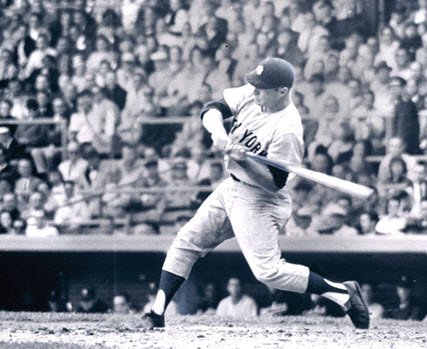
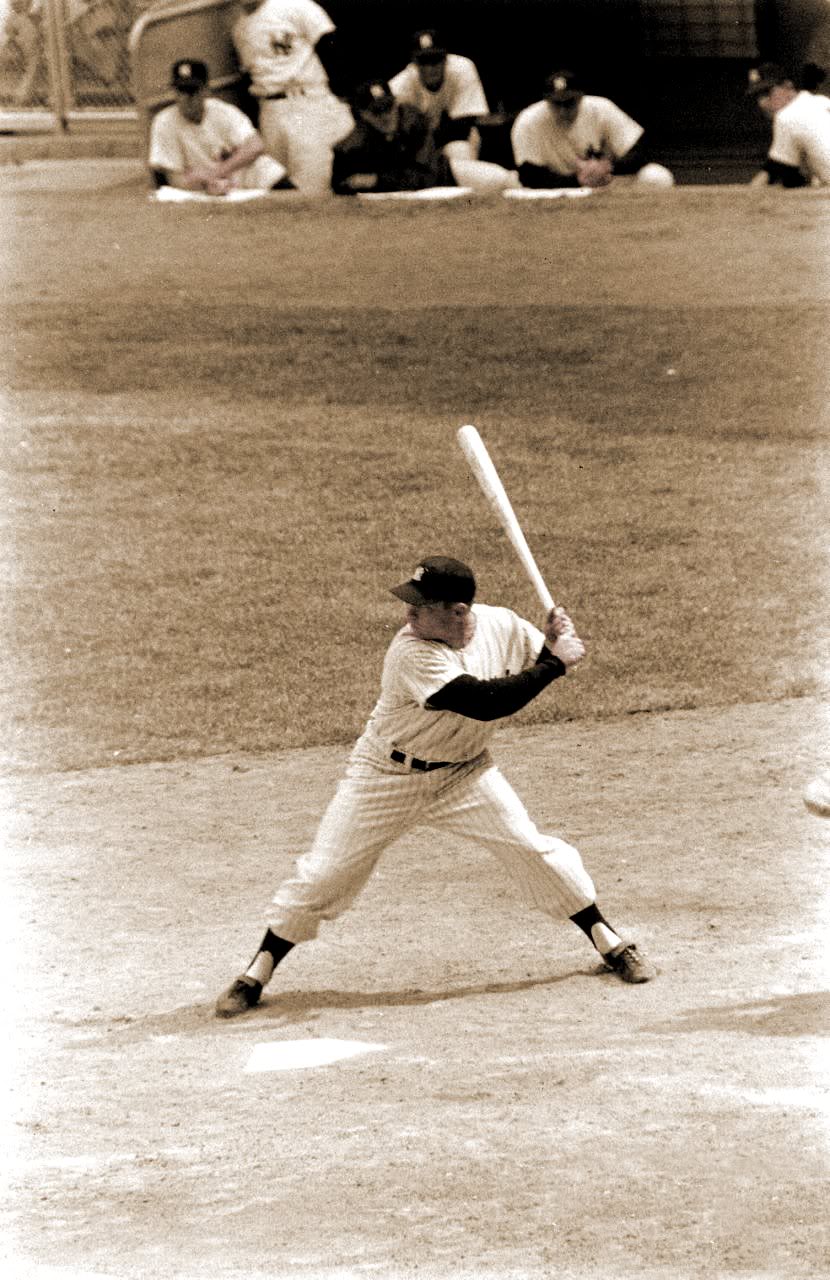
by Thomas Myers. Watch the following FunctionalPatterns YouTube video of Thomas Myers talking about the concept of Tensegrity, or Tension Integrity:
by Bill Jenkinson



